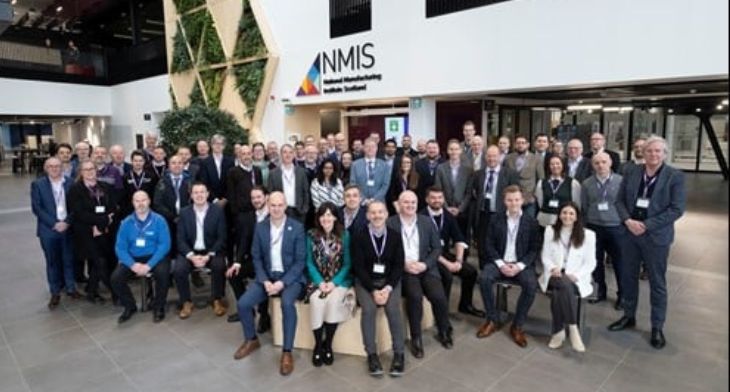


The infrastructure required to support zero-emission flight could be in place as early within the next three years, according to Glasgow Airport Hydrogen Innovation Hub.
During a summit held on 8 February, sector leaders in aviation, finance, aerospace, renewables and engineering, as well as academia and government, were told how the Innovation Hub’s development phase to generate, store and distribute hydrogen could commence this year, with the objective of the hub being ready to support zero-emission flights at Glasgow by 2027.
A consortium led by Glasgow Airport and net zero consulting co-developer Ikigai Group was set up in May last year with funding from the Scottish Government’s £7 million Hydrogen Innovation Scheme.
The Hub was tasked with delivering a feasibility study to determine the most efficient, bankable, green hydrogen production, storage and refuelling solutions, and to assess the operational feasibility of a multi-modal hydrogen hub at the airport. A key part of the study was to consider how the hydrogen hub at Glasgow could be replicated at airports around the world.
Jon Matthews, Group Head Capital Investment and Planning at AGS Airports, which owns and operates Glasgow (alongside Aberdeen and Southampton airports) said: “Hydrogen is becoming an increasingly viable option for regional and short-haul aircraft, which is why Glasgow – an airport that serves many of Scotland’s rural and island communities – is the perfect testbed.”
He also noted that: “Significant progress on hydrogen-powered aircraft has been well documented and rightly so, but equally important is the huge amount of pioneering work being undertaken at ground level to ensure the challenges and opportunities involved in creating the infrastructure required to support zero-emissions flight are addressed and realised.”
By creating a blueprint to combine an onsite energy hub with distribution to a variety of local users, the project aims to future-proof regional airport operations. Local users could include aircraft and ground handling equipment on the airfield as well as landside vehicles including vans, trucks and buses serving the terminal and beyond.
Helena Anderson, co-Founder of Ikigai added: “We recognise the pivotal role of airports as multi-modal energy hubs. This feasibility study is a world first, modelling and designing how to deliver scalable and commercially viable onsite green hydrogen to a variety of transport applications in and around Glasgow Airport.
“Glasgow is one of the best airports to start this ambitious project because it will have private wire solar, back-to-base flights and local hauliers and buses, allowing them to be first movers in the conversion to hydrogen. Moreover, this feasibility study shows that it is possible, in those circumstances, to sell green hydrogen at price parity with fossil fuels.”
Meanwhile, Andy Smith, Head of Sustainability Strategy at the Innovation Hub’s consortium partner, Loganair, said: “We are pleased to be part of the Glasgow Airport Hydrogen Innovation Hub, which is making cutting edge progress in developing solutions to hydrogen’s use in aviation.
“Hydrogen fuel is expected to play a significant role in decarbonising flights from airports like Glasgow in the coming decades and it has a particularly important role to play in Loganair’s future domestic network.”





